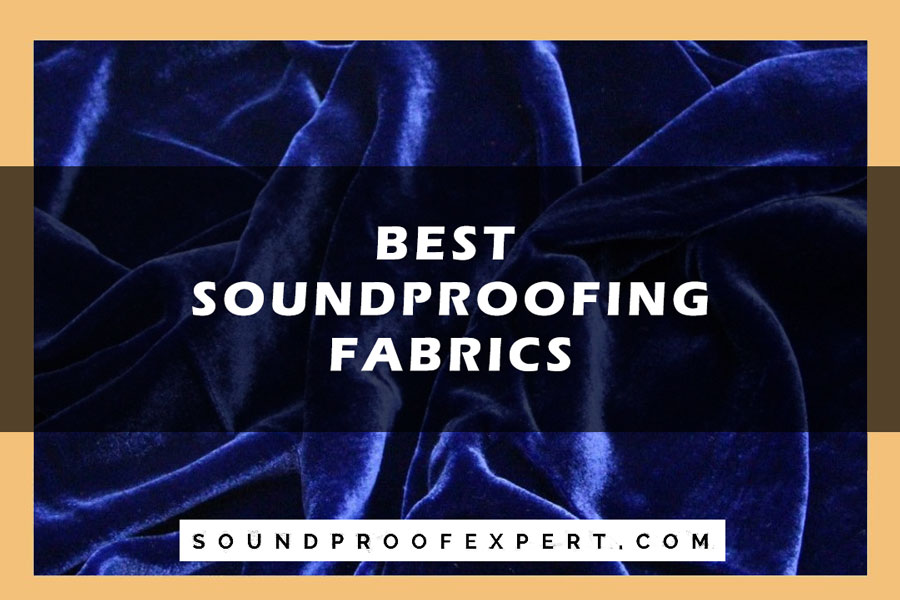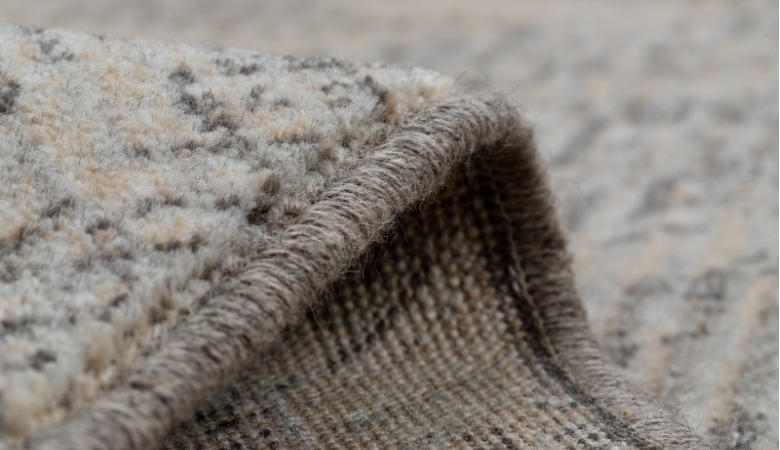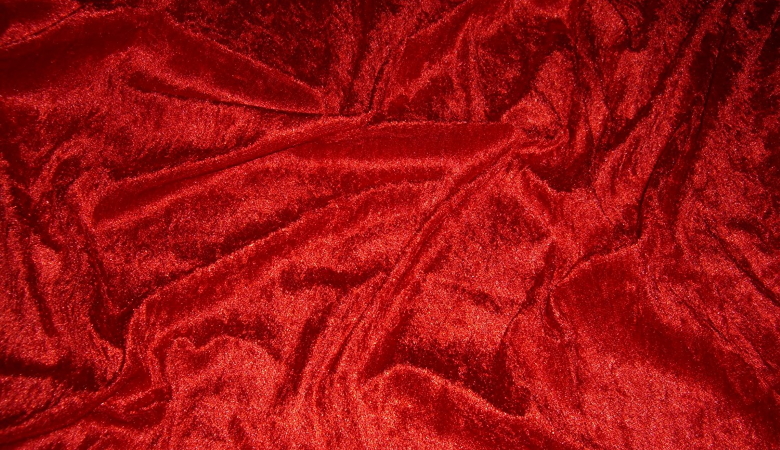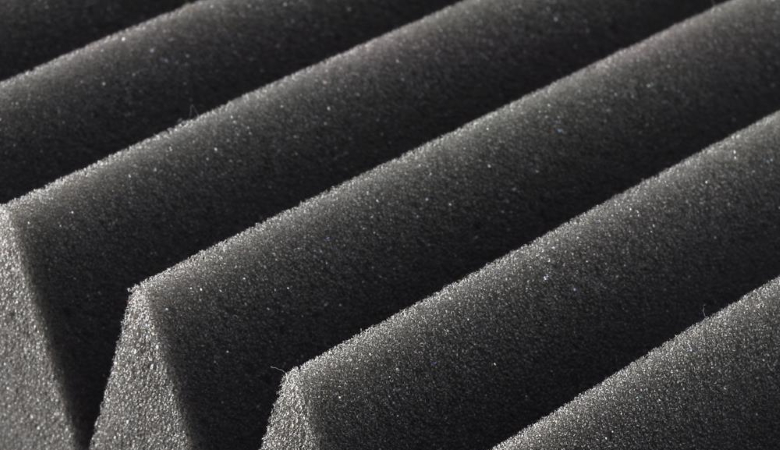
If you’re yearning for some peace and quiet at home or hoping to muffle some of the sounds coming from your music room or theater, there’s a lot of ways you can achieve it.
One of the lesser-known methods is using some carefully placed fabric that can either absorb sound or block it from traveling.
What are the best soundproofing fabric options, though?
Materials that have been proven to have soundproofing and sound-absorbing qualities including wool, foam, burlap, velvet, acoustic fabric, and mass-loaded vinyl.
The best choice will depend on its application and your budget, but each of them has something unique to offer for noise control.
We’re here to make your search for the best soundproofing fabric easier and have counted down the top performers in this category. Whether you want to improve acoustics or block out unwanted noise, there’s bound to be at least one fabric choice on here that can get the job done.
The Best Soundproofing Fabrics
Whether you’re looking for something to cover your walls with or hoping to get some soundproofing curtains made up, there’s a lot to choose from.
These are some of the best fabrics out there that have sound-absorbing, blocking, and reflecting properties for you to put to good use.
Velvet
Velvet doesn’t just look and feel nice, it has a lot of practical qualities too. This thick and luxurious feeling material is not known for its sound absorbing abilities, but it should be, and the heavier the better.
The thickness of velvet doesn’t always mean something heavier, so you have to look for good quality to determine weight. The plush vertical fibers of this fabric make it ideal for hanging, so you might consider using it to make window treatments from, only if you choose the heavyweight option.
Even better, you can double up the curtain with two layers and it will more absorb a whole lot of sound.
Wool

Wool is one of the most commonly used fabrics in carpets, and these soft walkways are known for their soundproofing capabilities. What makes wool so great at absorbing and deflecting sound are the many different shapes and sizes of fabric used, each of them skilled at warding off various frequencies of noise.
Wool should be used in a carpet for the best results, but you don’t only lay them on the ground. Many musicians hang carpets in the studio for acoustic benefits, so you can try it at home and be amazed at the difference it makes.
Acoustic Fabric
This is a special type of fabric made specifically to provide acoustic benefits. Unlike a soundproofing material, it allows the sound to travel through it without interference, but it can also offer some blocking materials between rooms.
These types of fabrics are commonly found in applications like covering speaker grills and bass traps and are popular in the music industry.
If you’re looking for something to improve sound quality and stop it from traveling at home though, the acoustic fabric is a great choice for household curtains and is available commercially.
Velour

If you like the idea of draping your walls with velvet but don’t quite have the cash to splash, velour is an affordable alternative. This is the cheaper version of velvet but also great for soundproofing, and it can be made into everything from wall hangings to window coverings to reap the benefits.
The high opacity fabric is a great choice for sound blocking as it controls how much noise leaves a room. This is why you’ll commonly see velour or velvet draped in large hangings throughout cinemas, theaters, and stages because it’s known for its acoustics and blocking.
As a bonus, velour looks and feels just as expensive as velvet but without the hefty price tag.
Burlap
Burlap is a popular choice for soundproofing because it’s made with an open weave pattern. This means not only air can pass through, but sound as well, and that’s why you’ll commonly see it wrapping acoustic panels.
Burlap helps the sound travel but also prevents it from leaving the space, so you can keep your noise contained wherever you are.
To get the best results from burlap, you should use another sound blocking material underneath, which can be useful when making curtains or wall hangings. With the two working together, it’ll be an effective soundproofing fabric and one that still offers more breathability than most.
Mass Loaded Vinyl
Mass-loaded vinyl is one of the most popular fabrics used in soundproofing, sound absorption, and noise reduction on the market today.
This material was first introduced in the 1960s and is still a favorite today because of its unique ability to dissipate sound that travels through it, which means no noise gest through your walls.
There are many applications of mass-loaded vinyl you can use, but for the best results, it can be applied in sheets with your drywall or even fastened to the outer wall. It’s relatively cheap but very effective, and perfect for those settings where looks don’t matter as much as soundproofing powers.
Foam

Foam is a soft and squishy fabric that is perfect for absorbing sounds, with loads of tiny pockets of gas that have been formed and hardened.
A piece of foam will absorb sound and not reflect it, so it’s less likely to travel, and it’s so easy to work with that you can put it virtually anywhere.
Acoustic foam has been specifically made for these types of purposes and will get you even better results than your run-of-the-mill foam. However, you can still do a lot of sound absorption with regular foam and it still ensures that whatever noise you’re making stays where it is.
Related Questions
The right choice in fabrics and materials can make all of the difference when trying to soundproof a room or improve its acoustics.
There’s a lot more you can do than just materials though, so check out these commonly asked questions about soundproofing space and our expert answers to give yourself a push in the right direction.
What is the Difference Between Soundproof and Sound Absorb?
Two terms often used interchangeably are soundproofing and sound absorption, however, they mean different things all together when it comes to controlling noise and sound in a room.
Soundproofing is the blocking of sound and sound absorption is the use of materials that absorb sound which limits how far it can travel.
What Absorbs Sound Best?
If you’re attempting to absorb sound in a room and not block it, you’ll want to stick to softer and more pliable materials that do this best. These are better for insulation and will absorb sound because of their softness, whereas harder options like metal and wood reflect them and should be avoided.
Do Towels Absorb Sound?
A standard towel can be effective at absorbing some sound because of its soft fibers that reflect and diffuse sound waves. If you’re looking for a way to block sound and have nothing else, you might hang some towels on the wall or use them to block doorway gaps to give yourself some relief from the noise.
Resources

Hi
Thank you for your brilliant blog
I live in a house converted into two flats. I am ground floor and the neighbours noise above is loud voices, tv, music, dropping things on the floor and walking heavy footed
What would you suggest I do????!!!
Many thanks
Unfortunately my bedroom is right in the entrance, my neighbors door is right next to mine and they are extremely rude and loud walking in and out about 50 times a day. Is there anything I can hang on the outside or inside of the door to soundproof some of this noise ?
I want to make a noise dampening headband for my son. He is eleven years old and is sensitive to how loud things get in gym class or lunch. He is not interested in fiddling with ear plugs and honestly neither am I – they would get lost in less than a day. I have a sewing machine and think I could sew something understated that could sit around his neck under his shirt and then get pulled up and over his ears during a loud time. I was wondering if you, or anyone reading, could give me advice as to what material to use for the part that goes over his ears and blocks out the noise of a bunch of screeching children.